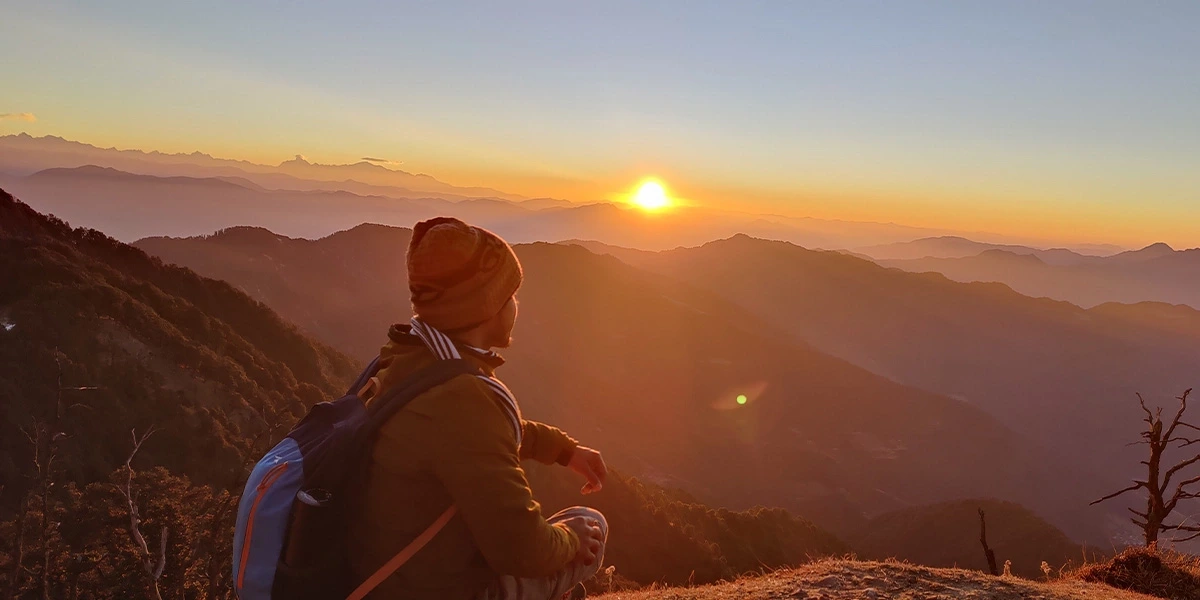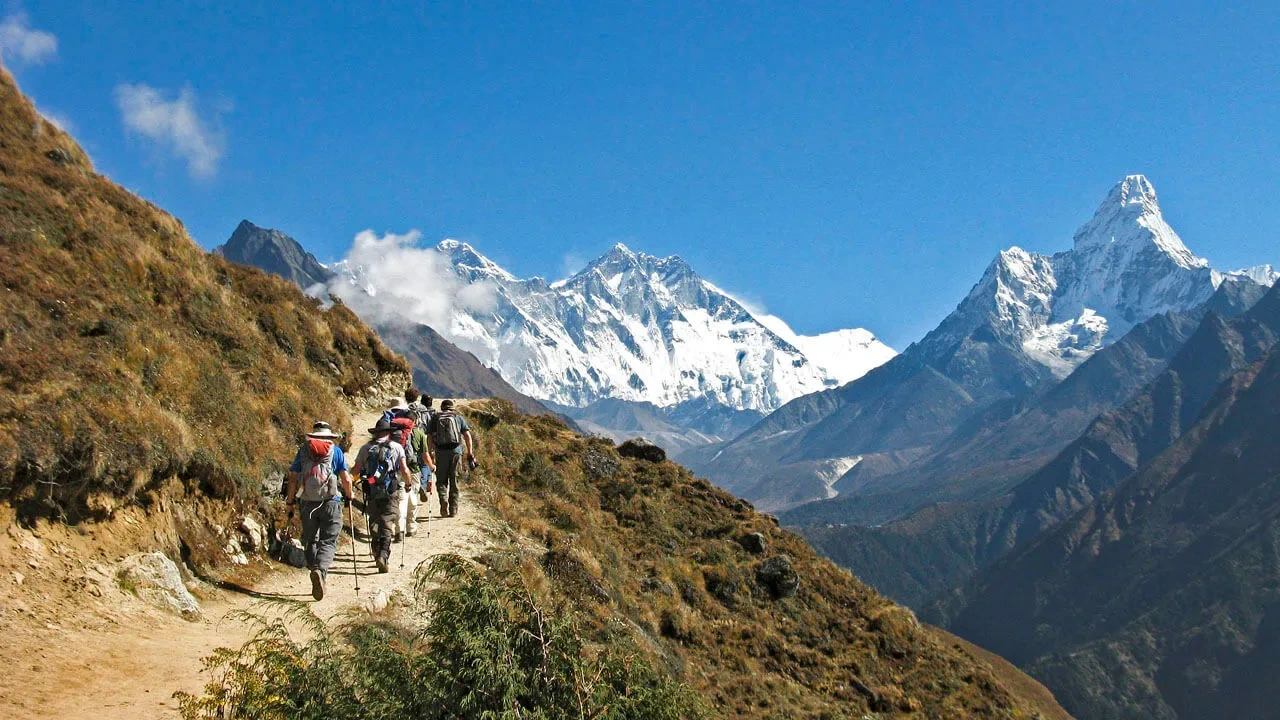Winter trekking is an entirely different ballgame compared to summer treks. The cold temperatures, unpredictable weather, and challenging terrain make it an adventure worth taking only if you're well-prepared. Whether you’re eyeing a trek to Kedarkantha, Chandrashila, or any other winter destination, the key to enjoying a safe and comfortable trek lies in proper planning and preparation. In this guide, we’ll cover essential tips for staying safe, comfortable, and well-prepared for your winter trek in the Himalayas.
1. Layering Your Clothing: The Key to Staying Warm
When it comes to winter treks, one of the most important things you can do is to dress appropriately. The cold can be unforgiving, but layering your clothing can ensure that you remain warm without overheating.
Base Layer: Start with a moisture-wicking base layer. Wool or synthetic fabrics are ideal because they pull moisture away from your skin, keeping you dry. Avoid cotton, as it traps moisture and loses its insulating properties when wet.
Insulating Layer: The second layer should be something that traps warmth. Fleece or down jackets are great options for this layer. They act as an insulator, keeping your body warm by trapping heat in.
Outer Layer: Your outer layer should protect you from the wind, snow, and rain. A waterproof and windproof jacket or shell will do the job. Ensure it has ventilation zips, as you'll need to cool down after intense climbs.
Accessories: Don’t forget a warm hat, gloves, and scarf. A neck gaiter or balaclava can keep the cold wind off your face, and thick woolen socks will help you avoid frostbite.
Tip: Keep extra layers in your backpack in case you need to adjust your clothing during the trek.
2. Avoiding Frostbite and Hypothermia: Know the Signs
Winter trekking exposes you to the risk of frostbite and hypothermia, both of which can be serious and life-threatening if not treated properly. It's essential to understand how to prevent them and how to recognize their symptoms.
Frostbite occurs when the skin and underlying tissues freeze, often affecting extremities like fingers, toes, and earlobes. The early signs of frostbite include numbness, a tingling sensation, or pale and hard skin. If you experience these symptoms, it’s crucial to warm the affected area immediately. Do not rub the skin, as this can cause further damage.
Hypothermia occurs when the body’s core temperature drops below normal levels. Symptoms include shivering, confusion, slurred speech, and drowsiness. If you or someone in your group shows signs of hypothermia, it’s essential to get to a warmer environment as quickly as possible and add layers of clothing.
Prevention: Keep moving, cover all exposed skin, and avoid getting wet. Regularly check your hands, feet, and face to ensure they aren't getting too cold. Avoid alcohol and stay hydrated, as they can lower your body’s resistance to cold.
3. Understanding the Risks of Icy Terrain
Winter treks often involve walking on snow and ice, which can make the terrain slippery and treacherous. It's crucial to be aware of the risks and take necessary precautions to stay safe.
Icy Trails: Snow-covered paths might look inviting, but they can hide icy patches that are hazardous. Trekking poles are your best friend here, as they provide extra stability and reduce the risk of slipping. Make sure your shoes or boots have a good grip and are designed for winter trekking.
Avalanche Risks: In some regions, especially in high-altitude areas, there’s always a risk of avalanches. Pay attention to weather warnings and avoid steep, exposed slopes during heavy snowfall. Your trekking guide will usually be equipped with the right knowledge and gear to assess avalanche risks, so always listen to their advice.
Tip: If trekking on icy slopes, consider wearing crampons (spiked traction devices) to prevent slipping and make the climb easier.
4. Staying Hydrated Even in Cold Weather
When trekking in winter, it's easy to forget that hydration is still essential. In cold weather, we don’t feel thirsty as often, but dehydration can still occur. Proper hydration keeps your body functioning and helps to regulate your temperature, so don’t neglect this aspect of your trek.
Drink Regularly: Drink small amounts of water consistently throughout the day. Warm drinks like herbal tea or hot water can be more appealing in cold temperatures.
Tip: Use insulated water bottles to prevent your water from freezing, especially during sub-zero temperatures. If you’re using a hydration system (like a CamelBak), make sure the hose is insulated to avoid freezing.
5. How to Read the Weather Forecast for Winter Treks
Winter weather can be highly unpredictable, and knowing how to read the forecast is crucial to planning your trek. Snowstorms, strong winds, or sudden temperature drops can change your entire trekking experience.
Check the Weather in Advance: Before your trek, always check reliable weather websites and apps to get the most accurate forecast. Pay attention to the temperature, wind chill factor, and chances of snowfall. This information will help you prepare your clothing and gear accordingly.
On the Trek: Your trek leader or guide will also have access to real-time weather updates. Listen to their advice and be flexible with your plans. If the weather worsens unexpectedly, it’s better to turn back early than risk your safety.
6. When to Start Your Trek: Early Start is Key
On winter treks, it’s important to start early, especially if you plan to catch the sunrise from a peak, like on the Chandrashila or Kedarkantha treks. Starting early helps you avoid the harsh midday sun and the risks associated with trekking in the heat after a long night of cold.
In addition to catching stunning views, starting early also allows you to tackle the steepest sections of the trail while temperatures are still low, ensuring that the snow and ice remain firm underfoot.
7. Emergency Protocols: Be Prepared for the Unexpected
No matter how much you plan, the unexpected can always happen. Being prepared for emergencies can make the difference between life and death on a winter trek. Make sure you have basic knowledge of first aid, and always carry essential emergency gear like a first aid kit, a flashlight, and a whistle.
Emergency Numbers: Ensure you have the emergency contact numbers for your trek area. Your guide should also have a satellite phone in case of severe conditions.
Winter trekking is an incredible experience that provides stunning views and a sense of achievement. However, it requires thorough preparation, awareness, and proper gear. Keep these tips in mind, and you’ll be better equipped to face the cold and tackle your winter trek with confidence. Remember, safety is paramount, and the journey should always be enjoyable, no matter how challenging it may seem at times.









